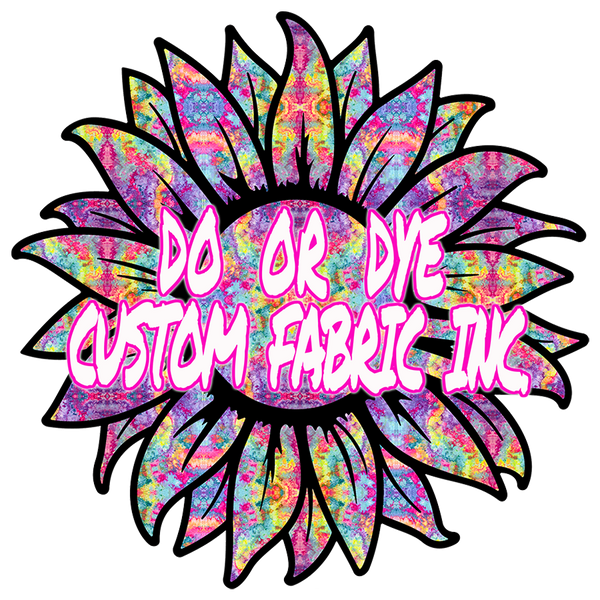Printing Processes at A Glance
Sublimation and pigment are two of the most common printing methods used within the United States to print on fabric. Do or Dye uses the sublimation process for in house printing. Here's a breakdown of the key differences between the two:
1. Printing Process:
- Sublimation Printing: Sublimation is a process in which special dyes are used on special coated paper. The paper is then directly heated, turning the dye into a gas without passing through a liquid state. This gas is then absorbed by the individual fibers of the fabric. The result is a permanent, high-resolution, and vibrant print that becomes part of the fabric itself.
- Pigment Printing: Pigment printing involves using color pigments that are applied directly to the fabric surface using a binder. The pigments adhere to the fabric with the help of the binder, creating a layer of color on top of the fabric.
- Sublimation Printing: Sublimation inks penetrate the fabric, resulting in prints that are more durable and long-lasting. The colors are less prone to fading, cracking, or peeling, making sublimation prints suitable for items that undergo frequent washing or exposure to the elements.
- Pigment Printing: While pigment prints are durable, they may not be as resistant to wear and fading over time as sublimation prints. The pigments are on the fabric's surface, which can make them more susceptible to wear and fading over time, especially with frequent washing or exposure to harsh conditions.
- Sublimation Printing: Sublimation prints are known for their soft feel due to the ink becoming part of the fabric, there is no additional layer on the surface. The hand feel is that of the untreated fabric.
- Pigment Printing: Pigment prints can have a slightly raised or stiff feel on the fabric due to the layer of pigment inks binding to the surface.
- Sublimation Printing: Sublimation printing often produces more vibrant and detailed colors. The process allows for a wide range of colors and intricate designs, making it especially popular for sports jerseys, activewear, and other products that require high-definition prints. Do or Dye uses extended colors allowing us the use of 8 inks(dyes) as opposed to the standard 4 that are commonly used in the print industry. The use of 8 base colors allows us to achieve colors that aren't typically achievable in the fabric printing industry including fluorescents.
- Pigment Printing: While pigment printing can achieve a variety of colors, the vibrancy is often slightly less intense compared to sublimation. The color range is still broad, but intricate details may not be as sharp.
- Sublimation Printing: Sublimation is most effective on polyester and synthetic blend fabrics. The process relies on the ability to open synthetic fibers and accept the sublimation dyes.
- Pigment Printing: Pigment printing can be used on a wider range of fabrics, including natural fibers like cotton, as it doesn't rely on the same fiber-opening mechanism as sublimation.
Sublimation printing is often favored for its durability, vibrant colors, soft feel, and suitability for polyester fabrics. However, the choice between sublimation and pigment printing depends on the specific requirements of the project, the type of fabric being used, and the desired characteristics of the final product.

Our natural fiber bases are printed overseas and rely on a process called 'fiber reactive printing.' Fiber reactive is much like the sublimation process in the aspect of penetrating the material and attaching to individual fibers, but we can dig into that comparison another day.
